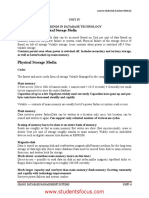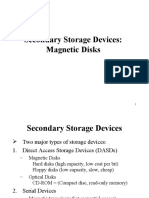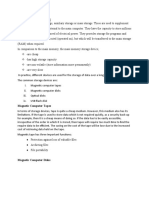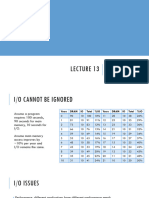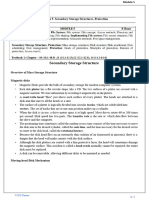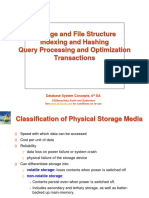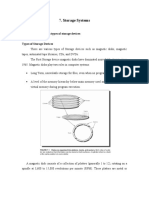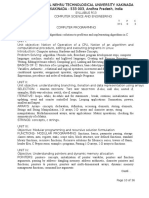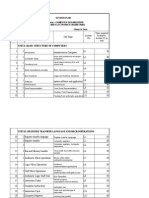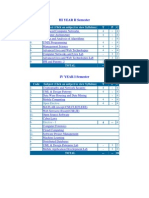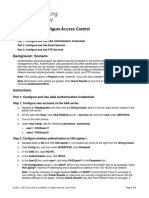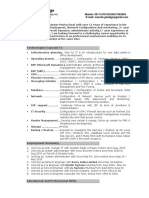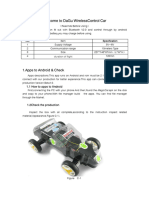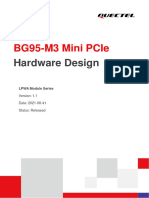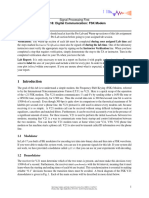0% found this document useful (0 votes)
181 views9 pagesDatabase Storage Media Overview
This document summarizes different storage media used in database systems including their characteristics like speed, cost, and reliability. It focuses on magnetic disks, describing their physical components and characteristics like seek time, rotational latency, and data transfer rate that impact performance. Optimization techniques for disk access include scheduling, file organization, buffering, and using RAID configurations to improve reliability and performance.
Uploaded by
gdeepthiCopyright
© © All Rights Reserved
We take content rights seriously. If you suspect this is your content, claim it here.
Available Formats
Download as DOCX, PDF, TXT or read online on Scribd
0% found this document useful (0 votes)
181 views9 pagesDatabase Storage Media Overview
This document summarizes different storage media used in database systems including their characteristics like speed, cost, and reliability. It focuses on magnetic disks, describing their physical components and characteristics like seek time, rotational latency, and data transfer rate that impact performance. Optimization techniques for disk access include scheduling, file organization, buffering, and using RAID configurations to improve reliability and performance.
Uploaded by
gdeepthiCopyright
© © All Rights Reserved
We take content rights seriously. If you suspect this is your content, claim it here.
Available Formats
Download as DOCX, PDF, TXT or read online on Scribd
/ 9





